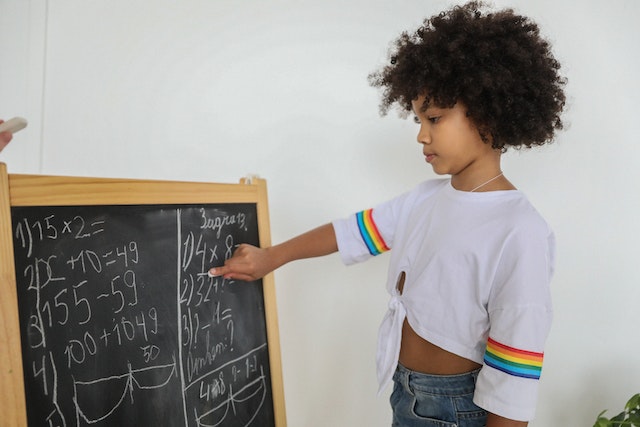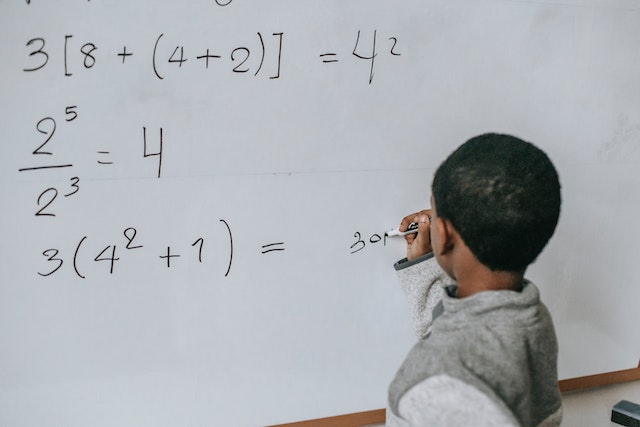Learning multiplication can be a challenge for some 2nd graders. But with the right tools and strategies, it can be an exciting and rewarding experience for children.
Fun Ways to Teach Multiplication to 2nd Graders
In this blog post, we will discuss how teachers can use games and interactive activities to make teaching multiplication both fun and effective.
Use Games to Teach Multiplication
Games are one of the best ways to make learning multiplication both enjoyable and effective. The use of games not only helps kids master multiplication concepts but also provides them with an opportunity to practice problem-solving skills. Some of the most popular game-based activities used in classrooms include:
• Multiplication Bingo – This classic game is a great way to review basic facts related to multiplication. It’s also a great way for students to gain confidence in their math skills as they compete against each other.
• Math Race – This game is designed for small groups of students who need extra practice with multiplication facts. Students work together in teams and answer questions correctly to reach the finish line first!
• Easy as Pie – This game encourages students to solve problems quickly by using their knowledge of multiplication facts. Students must answer questions correctly within a certain time limit in order to “bake” a pie before their opponents do!
• Mystery Squares – Mystery squares is another fast-paced game that requires students to answer questions correctly before their opponents do. It is an excellent way for kids to practice their math skills while having fun at the same time!
Using Interactive Activities
Interactive activities are another great way for kids to learn multiplication while having fun at the same time. Some examples of interactive activities include:
• Flash Cards – Flashcards help children memorize important facts related to multiplication and can be used as an effective tool in teaching new concepts. They are also helpful for reviewing old concepts that were previously taught in class.
• Math Labs – Math labs provide students with hands-on opportunities to explore different aspects of mathematics, including problem-solving through experimentation, discovery, exploration, and collaboration with peers. Through these activities, students learn how different mathematical operations come together in real-world applications such as money management or measurement conversions. Additionally, math labs help foster critical thinking skills which can be beneficial when solving complex math problems down the line!
• Online Resources – There are also many online resources available which offer interactive lessons, quizzes, and games specifically designed for teaching 2nd graders about multiplication! These resources provide students with engaging content that reinforces important concepts while keeping them engaged throughout the lesson plan!
Teaching multiplication doesn’t have to be boring or difficult—it can actually be quite enjoyable if you use creative strategies like games and interactive activities! With the right tools, teachers can help 2nd graders understand and apply basic concepts related to multiplication while having fun at the same time! By incorporating these techniques into your classroom instruction, you will not only improve student understanding but also increase engagement levels among your learners! Incorporating these strategies into your instruction will ensure that your 2nd graders feel confident when tackling any kind of mathematical problem they may encounter in the future!

Creative and Fun Ways to Teach Multiplication
Learning multiplication can be a challenge for some students, but there are ways to make it fun and engaging. Whether you’re a teacher or parent looking for ways to help your students understand the basics of multiplication, there are many creative and effective strategies available. Let’s take a look at some of the best ways to teach multiplication.
Incorporate Games into Learning
One way to make learning multiplication more enjoyable is by incorporating games into the lesson plan. For example, you could have students create their own math-based game involving multiplication or use simple card games like War that feature multiplying numbers. You can also find online math-based games that will motivate your students while teaching them important concepts in a fun and interactive way. Additionally, board games like Monopoly require players to multiply numbers in order to progress through the game, so they can be great tools for teaching multiplication in a playful setting.
Break Up Lessons Into Smaller Parts
When teaching complex topics like multiplication, it’s essential to break up large lessons into smaller parts that are easier for students to understand and remember. Start with basic concepts such as repeating addition before moving onto more complicated areas like long multiplication problems. Doing this will help students become comfortable with each concept before progressing onto the next step in their studies. Encourage your students to practice each skill until they become confident with it before moving on—this will give them a solid foundation that they can build upon as they learn more advanced math concepts later on down the line.
Use Visual Aids
Visual aids can be extremely helpful when teaching complex topics such as multiplication, so try using diagrams and charts whenever possible when introducing new material to your class. Draw out sets of equations on the whiteboard or use colored objects or cards to demonstrate how different numbers go together—this makes abstract concepts much easier for students to comprehend visually instead of having them rely only on words or symbols on paper. Make sure you explain each step carefully so your students can fully grasp what is happening during each equation or problem-solving activity—this will ensure everyone is on the same page throughout the lesson plan!
Learning how to multiply numbers doesn’t have to be a daunting task; with the right approach and activities, it’s possible for teachers and parents alike to make this subject fun and engaging for their students! Incorporating games into learning is one way that works well; breaking up lessons into smaller parts is another great strategy; visual aids are also very helpful in understanding complex mathematical concepts quickly while making them easier for everyone involved in the process. With these tips in mind, you should have no trouble teaching your student how do multiply numbers confidently!
